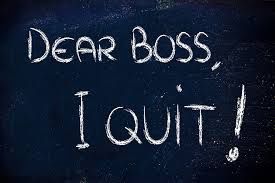Matching an employee’ natural strengths to reduce turnover.

I quit. I am taking a better opportunity.
Those are the words you least want to hear from a high-performing employee. It takes time to find good talent—and employee turnover costs add up—so losing even one team member can hurt.
So why do good employees quit? If you’ve been dealing with higher turnover than you want, and you can’t figure out exactly why your new hires are failing, you have a problem. Specifically, you have a problem with job fit.
Good employees quit because of poor job fit.
What’s job fit? It’s the sense of feeling productive and satisfied in your work because your day-to-day tasks energize you.
Poor job fit occurs when a person is placed in a role that doesn’t match their natural strengths or doesn’t fit their personal and professional needs. Employees who work in roles that are a good fit tend to be productive, happy team members who stick around. On the other hand, employees who work in roles they aren’t cut out for tend to be less productive, less happy, and less likely to stick around. It doesn’t matter if you have 150 employees or only 15. Job fit matters.
Poor job fit disrupts employee engagement. In fact, poor job fit is one of the four forces of disengagement. The issue can plague both new hires and long-term employees.
New hires sour quickly when they discover they’re a terrible match for their new job. Close to half of new employees fail within 18 months—it’s a stat that should scare any business owner.
Long-term employees suffer when their roles have evolved to fit the changing needs of the business and their new responsibilities don’t suit their strengths and needs.
Whether they’re just stepping in the door or have been on the payroll for a decade, employees quit when they feel like their employer set them up to fail. Asking people to spend 40 hours a week doing tasks that drain their energy is a recipe for disaster.
Here are a few warning signs of person/role mismatch:
- The employee often appears upset, anxious, bored, or frustrated
- Tasks take significantly longer than they should
- The employee possesses the skills/expertise he needs to succeed but still fails to deliver good work consistently
- Improvement is slow or nonexistent
- You spend more time coaching this person than you do your other employees
- The employee gravitates toward different work outside of his normal job area
According to numerous academic studies, job fit is a significant contributor to employee retention and levels of employee engagement and productivity. When we hire someone whose behavioral traits don’t match the job duties we set them up to fail. An example of this would be putting a risk-averse individual into a role where he or she is asked to make quick decisions that could affect the company’s health. Imagine how much stress that person would carry day in and day out
While it’s possible to train and coach employees so that they’re better equipped to carry out the tasks required of them, most people can only “flex” to work in a role that’s a mismatch for so long. Eventually, they crack.
You’re better off ensuring employees fit the role well so you can avoid the uphill battle. This means tweaking your hiring practices as well as reevaluating and redefining roles that have changed over time.
So, how can you ensure a better job fit? There are two components to this:
Define the needs of the role. Set a job target. This is a structured way to align key stakeholders and identify what qualities and behaviors will help someone thrive in the position. Should the person be highly disciplined and rules-based, or a big picture thinker who delegates the details? Will the job require a lot of social interaction, or will it mean many heads-down hours to get the work done?
Match the person to the defined role. After you’ve assessed the job, give a behavioral assessment and a cognitive assessment to evaluate a person’s fit for the role. These tools are highly effective in helping you identify which individuals are likely to be a great fit for the job. Using them in concert with resume, references, interviews, and skills-based testing (if the role requires specific expertise) is the best way to ensure person/role fit.
Your work doesn’t end there, of course. Perception is also key. If employees think they’re underperforming in a job due to lack of manager feedback—regardless of whether or not they’re underperforming—they may begin to disengage. Work closely with your employees to help them set goals for themselves, then give honest feedback during regularly scheduled 1:1 check-ins.
The more you can set your employees up for success the better chance you have of reaching your business goals.
For more information Request a Demo.
Written by Erin Balsa

